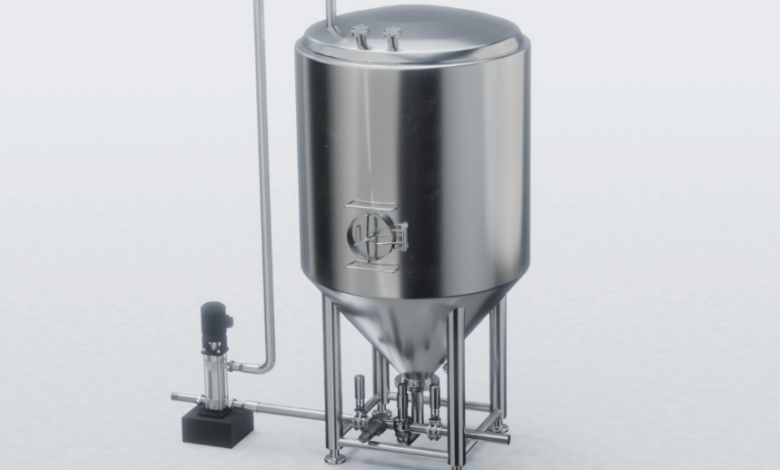Custom Fermentation Tank Manufacturing: What You Need to Know

In the world of brewing, winemaking, kombucha production, and food fermentation, standard tanks often can’t meet the unique requirements of every operation. That’s where custom fermentation tank manufacturing comes into play. Whether you’re scaling up your brewery, launching a specialty product line, or integrating tanks into a complex facility layout, going custom can offer the flexibility and precision you need.
But how does custom fermentation tank manufacturing work, and what should you consider before placing an order? This article dives into everything you need to know—from design considerations and material selection to cost, compliance, and manufacturer selection.
Why Go Custom? Key Benefits of Tailored Fermentation Tanks
1. Facility Optimization
Off-the-shelf tanks may not fit into your building’s existing floor plan or utility layout. Custom tanks can be designed to:
- Maximize vertical or horizontal space
- Accommodate low ceiling heights or narrow entryways
- Fit seamlessly into your workflow
2. Process-Specific Features
If you’re fermenting specialty products—like sours, high-gravity beers, or probiotic beverages—your process may require:
- Higher pressure tolerance
- Precise temperature control
- Enhanced sanitation features
- Multiple ports for sampling, CO2 purging, or ingredient additions
3. Brand Differentiation
For customer-facing setups, a customized tank with your brand’s logo, unique finish, or viewing ports can serve as a marketing tool as well as a fermentation vessel.
Key Design Elements to Consider
1. Size and Volume
- Common tank capacities range from 1 BBL to over 100 BBL
- Choose volume based on your batch size, production frequency, and scalability
- Consider having multiple tanks of different sizes for flexibility
2. Shape and Bottom Type
- Conical Bottom: Ideal for yeast harvesting and sediment collection
- Flat Bottom: Cheaper but harder to clean and less efficient for sediment removal
- Sloped Bottom: Often used in wine tanks for draining lees and cleaning
3. Pressure Rating
- Standard fermenters are designed for atmospheric pressure
- Pressurized fermenters (Unitanks) allow for carbonation and CO2 retention
- Ensure the design complies with ASME or PED standards if pressure is involved
4. Cooling and Insulation
- Glycol jackets for temperature regulation are a must for most commercial operations
- Polyurethane foam insulation helps maintain fermentation temperature stability
- Multiple zones can offer better control for large tanks
5. Manways and Access Ports
- Top manway: Easier for dry-hopping or top-down inspection
- Side manway: Preferred for cleaning and yeast dumping
- Customize the number, size, and location based on your needs
6. Valves and Fittings
- Sample valves, carbonation stones, PRVs, and thermowells should be planned early
- Tri-clamp fittings offer flexibility and easy cleaning
Materials and Construction: Choosing the Right Components
1. Stainless Steel Grade
- 304 stainless steel: Standard in most breweries; corrosion-resistant and cost-effective
- 316 stainless steel: More resistant to acids and salts; common in wine and kombucha production
2. Surface Finish
- 2B or brushed finish: Suitable for external surfaces
- Polished interior (RA < 0.6μm): Improves cleaning and reduces microbial risk
3. Welding and Fabrication
- Sanitary TIG welding ensures durability and hygiene
- Internal welds should be ground smooth and polished
Certifications and Compliance Requirements
Depending on your region and application, your custom fermentation tank may need to meet:
- ASME (U.S.): Required for pressurized tanks
- CE Mark (Europe): Mandatory for equipment sold in the EU
- FDA Compliance (U.S.): For materials in contact with food
- 3-A Sanitary Standards: Essential in dairy and beverage processing
Be sure to request certificates from your manufacturer and clarify any local regulations before production begins.
The Custom Manufacturing Process: From Quote to Delivery
Step 1: Initial Consultation
- Share your requirements: size, pressure rating, utility connections, port configuration, etc.
- Send facility layout or photos for better design alignment
Step 2: Engineering and Design
- Manufacturer drafts CAD drawings and specifications
- Review and approve design iterations
- Timeline and cost estimate are finalized
Step 3: Fabrication
- Raw material sourcing and cutting
- Welding, polishing, and fitting assembly
- QA/QC inspections and pressure tests
Step 4: Shipping and Installation
- Tanks are carefully packaged for freight or container transport
- Large tanks may be shipped in sections and assembled on-site
- Some suppliers offer installation supervision or documentation
Cost Factors: What Influences the Price of Custom Fermentation Tanks?
Custom tanks are a bigger investment than standard models. Here’s what drives the cost:
1. Tank Size and Volume
Larger tanks require more materials, labor, and transport accommodations.
2. Pressure and Jacket Requirements
Tanks rated for pressure or with multi-zone cooling jackets cost significantly more.
3. Customization Level
More ports, special manways, sight glasses, or unique designs raise complexity and price.
4. Material Choice
316 stainless steel and higher-grade finishes add to material costs.
5. Certifications and Testing
ASME or PED compliance, hydrostatic testing, and third-party inspections increase final costs.
Estimated price ranges for custom tanks:
Tank Size Base Price (USD) Fully Customized (with jackets, CIP, pressure) 3 BBL $3,000–$6,000 $5,000–$9,000 7 BBL $5,000–$9,000 $8,000–$14,000 15 BBL $10,000–$16,000 $14,000–$22,000 30 BBL $18,000–$28,000 $24,000–$38,000
Tips for Working with a Custom Fermentation Tank Manufacturer
- Start Early: Custom builds can take 8–16 weeks depending on complexity
- Request Drawings and Revisions: Never proceed without final CAD approval
- Check Certifications and References: Ask to see past projects
- Plan for Utilities: Provide utility schematics if available
- Negotiate Terms: Ensure clarity on warranty, payment terms, and shipping details
Why Micet Is a Trusted Partner for Custom Fermentation Tanks
Micet is a global leader in stainless steel fermentation equipment, offering fully customizable solutions for breweries, wineries, kombucha producers, and food manufacturers.
Why Choose Micet?
- Over 10 years of experience in custom tank design and manufacturing
- Premium 304/316 stainless steel with polished sanitary finishes
- In-house engineering team for tailored CAD design
- Jacketed, pressurized, and non-pressurized options available
- ASME and CE certification compliance
- Global shipping and expert support for installation
Whether you need a single fermenter or a full custom-built brewhouse, Micet delivers reliable quality, fast lead times, and cost-effective pricing.
FAQs
Q1: How long does it take to manufacture a custom fermentation tank?
Typically, the process takes 8–16 weeks from design approval to delivery, depending on complexity and order volume.
Q2: Can I add more ports or change fittings after the tank is made?
Modifications after manufacturing are costly and limited. It’s best to plan all fittings, valves, and ports during the design phase.
Q3: Are custom tanks always more expensive than standard models?
Not necessarily. If you require features not found in standard tanks (like dual-zone cooling or unique dimensions), custom tanks can be more cost-effective than retrofitting later.



